The Intel Core i3-7350K (60W) Review: Almost a Core i7-2600K
by Ian Cutress on February 3, 2017 8:00 AM ESTAlien: Isolation
If first person survival mixed with horror is your sort of thing, then Alien: Isolation, based off of the Alien franchise, should be an interesting title. Developed by The Creative Assembly and released in October 2014, Alien: Isolation has won numerous awards from Game Of The Year to several top 10s/25s and Best Horror titles, ratcheting up over a million sales by February 2015. Alien: Isolation uses a custom built engine which includes dynamic sound effects and should be fully multi-core enabled.
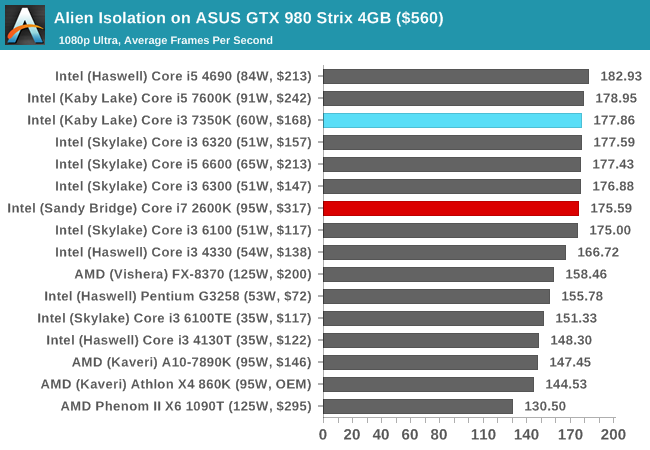
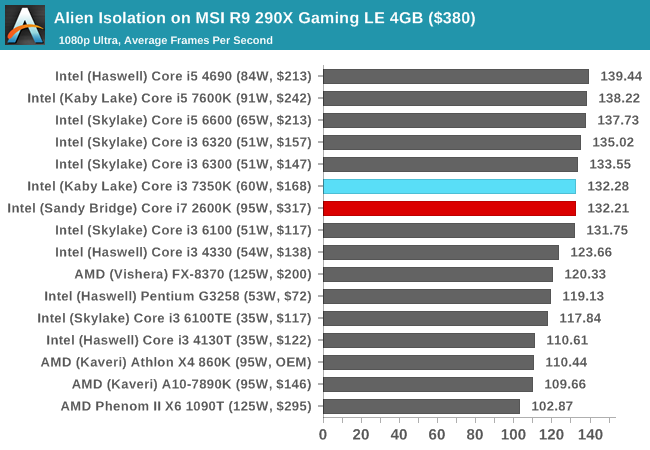
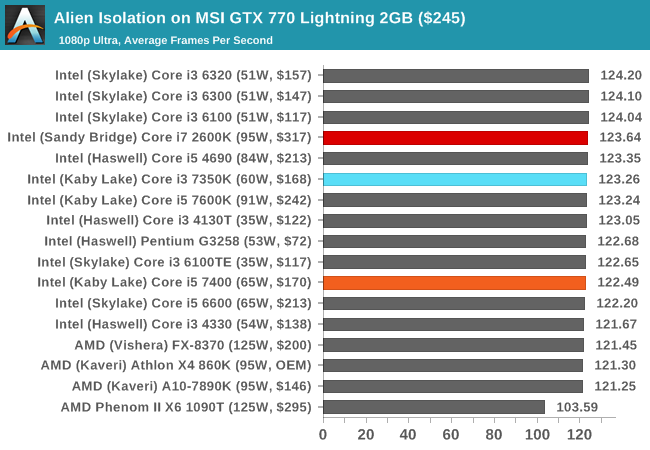
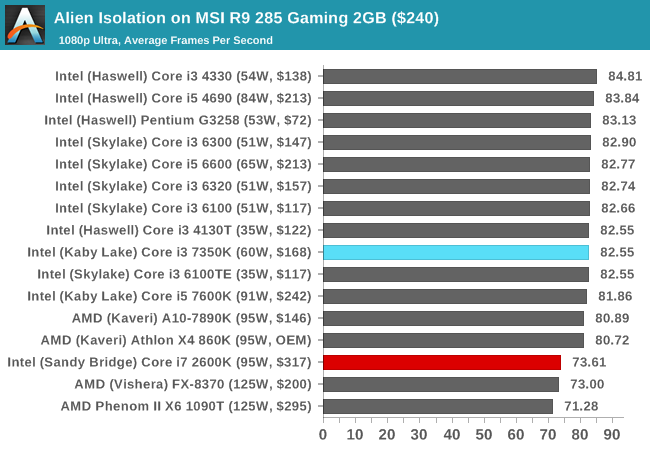
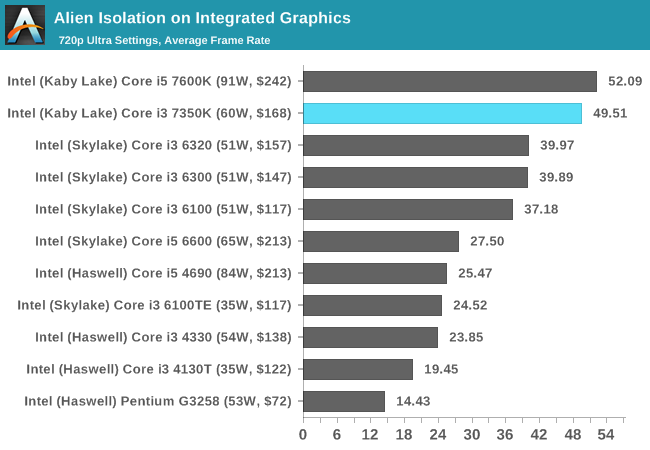
Aside from a small dip by the Core i7-2600K when using the R9 285, the i3-7350K matches the other CPUs in Alien Isolation.











186 Comments
View All Comments
Ian Cutress - Friday, February 3, 2017 - link
There are some minimum frame rate numbers in Bench, however they're not all regular (they're based on pure min, not 99%). The goal is to have some nicer numbers in our testbed update. Soon. When I find time to finish the script ... :Dfanofanand - Friday, February 3, 2017 - link
"This RGB fad that apparently sells like hot cakes"I love you Ian! In a totally hetero way.....
Seriously though great article, this should silence all the crybabies who whine about the lack of "Anandtech style in-depth analysis". You are still the best CPU reviewer in the biz!
jgarcows - Friday, February 3, 2017 - link
I'm still running an i5-2400 at default speeds that I paid $205 for when it first came out. It is insane how slow the improvement of intel chips have been. You'd think by now an i3 would be an upgrade.crashtech - Friday, February 3, 2017 - link
Frame times would be what hurts the i3 in games if anything. The averages may not be telling the whole story.djscrew - Friday, February 3, 2017 - link
Don't count on this being the new norm. Even though Intel just invalidated a long standing policy and the perception that these are inferior chips with this change I don't think it will lat. The next process shrink will likely bring with it a die size change leaving the i3 people who want to upgrade a few years down SOL. They could simply roll back this "feature" and we're back to status quo.fanofanand - Friday, February 3, 2017 - link
Your comment doesn't make sense. The next node will require a new chipset and ANYONE with today's mobos will need to upgrade, EVERYONE will be SOL.jaydee - Friday, February 3, 2017 - link
Conclusions page: "A good example of this is Agisoft: the Core i5-7400 (which costs $14 more, quad core, 3.4-3.8 GHz) completes the work ~10% quicker."Do you mean the i5-7400 @ 3.0-3.5 GHz, or the i5-7500 @ 3.4-3.8 GHz?
Ian Cutress - Friday, February 3, 2017 - link
Ah yes, I meant the 7400. I had 2600K numbers in my head at the time. :)name99 - Friday, February 3, 2017 - link
"and goes in line with the fact that Intel has officially stated that one of the key features of the new 14+ process is that the transistors are more ‘relaxed’ and there’s no decrease in density."Remember those days when Intel was slagging TSMC for no transistor scaling? Ah good times.
[img] https://www.extremetech.com/wp-content/uploads/201... [/img]
I guess TSMC just decided to "relax" their transistors...
name99 - Friday, February 3, 2017 - link
"The latest memory technology to hit prime time is Intel and Micron’s 3D XPoint. "Where "hit prime time" means "may ship some time in 2019"?
No-one cares about 3D XPoint in SSDs; and the DRAM version seems utterly MIA since the initial enthusiastic Intel claims. (Come to think of it, much like Intel 10nm ...)